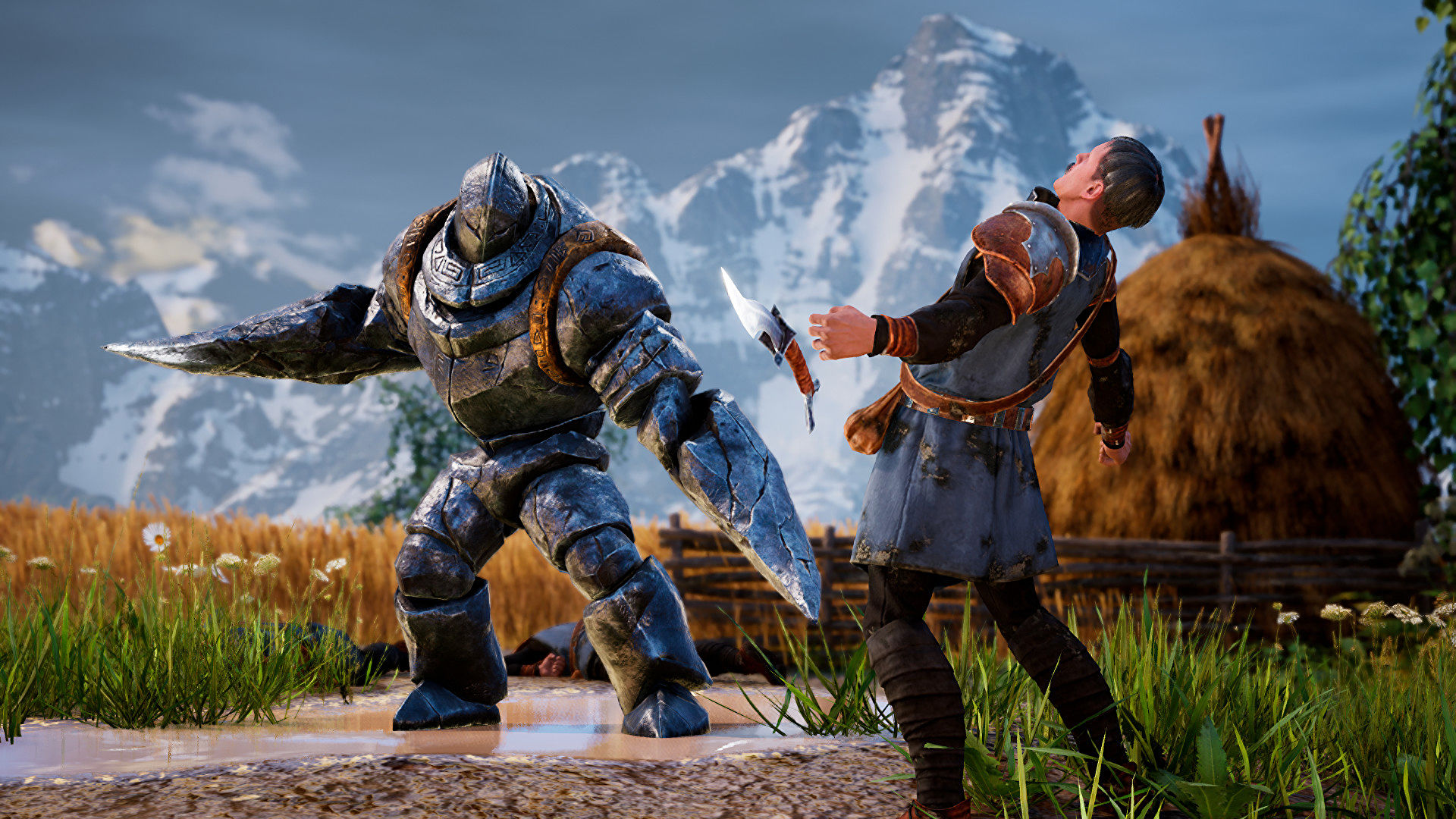It’s been a long time since the original, is the world ready for more King’s Bounty? The Finger Guns Review;
Turn based action RPGs with an emphasis on strategy and tactical gameplay are quite the rarity in today’s video game landscape, particularly in the AAA space. King’s Bounty II aims to fill that void with the long-awaited return of the franchise. With the original having been released in 1990 – damn… before I was even born – it certainly has had a lot of time to learn during its slumber. So can the sequel live up to the hype and deliver for the fans who played its predecessor all those eons ago?
King’s Bounty II is hugely ambitious in it’s scope, with some creative elements and an in-depth combat system that’ll keep fans of the turn based action genre entertained. It’s sadly also massively hampered by technical and optimisation options, a lackluster story, disgracefully bad voice acting and some infuriating difficulty spikes. Throughout my time with it, I couldn’t help but wonder what this game could have been with the budget of a AAA title and further development time. Alas though, let’s explore more about why King’s Bounty II is more a trinket than the treasure it could have been.
Embarking on your journey, you’ll select from three main characters. Aivar (who I went for) is a mercenary adept at warfare. Katharine is a mage and Elisa a paladin. Each option has a different core bonus and they all look like pre-made character creator NPCs. There’s no particular customisation outside of armour outfits (that grant different attributes) to be had so what you select is what you’ll have for your time within Nostria.
As you set out on your epic fantasy journey, you’ll be given options about how you’ll solve quests and level up your character. There are 4 core Ideals: power, finesse, anarchy and order. Power and finesse will always be in opposition of each other, as will anarchy and order. Making decisions on how to therefore deal with the various problems you’ll encounter provides the RPG potential of King’s Bounty II.

Personally, I found this system great in theory, but quite superfluous in practice. When given a choice, both options will immediately be marked on your map and compass to effectively hand-hold you into whichever decision you’re going for. There’s no room for organic or subtle decision making where the game will tell you after the decision what the consequences are. For example, when I was tasked with finding a mana crystal to power an aqueduct, it was virtually spelled out for me what the “good” and “bad” choice was and they were instantly labelled for me, instead of letting me decide for myself whether quelling the dead’s anguish was a better option than just straight up destroying them for the crystal.
It’s a double-edged sword, as the on-rails, arbitrary signalling of decisions meant I rarely actually cared about the moral or ethical dilemma it presented. I simply chose the option I’d effectively selected from the outset when I made the choice to go Order and Finesse over the other two. Conversely, it does have me semi-intrigued to do another playthrough as a clear Anarchistic and Power mad character. It’s just a shame the structure of decision making was made so clear-cut, as it removes any sense of nuance or investment in your decisions, despite the apparent narrative stakes.
This is somewhat compounded by the leveling system. King’s Bounty II effectively has 4 upgrade trees, tied to each Ideal. Each decision you make according to an ideal rewards you with specific points to that ideal allowing the higher tier options. Consequently, you’re actively encouraged to stick with 2 paths to maximise your potential upgrade gains. This actually is a detriment to the game’s presentation of the upgrade system. While you can invest your talent points freely across the trees, you risk either not getting the most potent upgrades for 2 ideals to spread your specialisation or alternatively risk wasting talent points in Ideals that you can’t progress any higher on.
Upgrades themselves are noticeably empowering and are essential to progression in Nostria’s world, so they at least are fulfilling. You can freely reset your talent points to reinvest them should you wish to, but only twice (when I tried anyway). There is a nice sense of creating a specific character with the ideals, but the system just seems at odds with itself and overall detracted from the narrative underpinning King’s Bounty II.
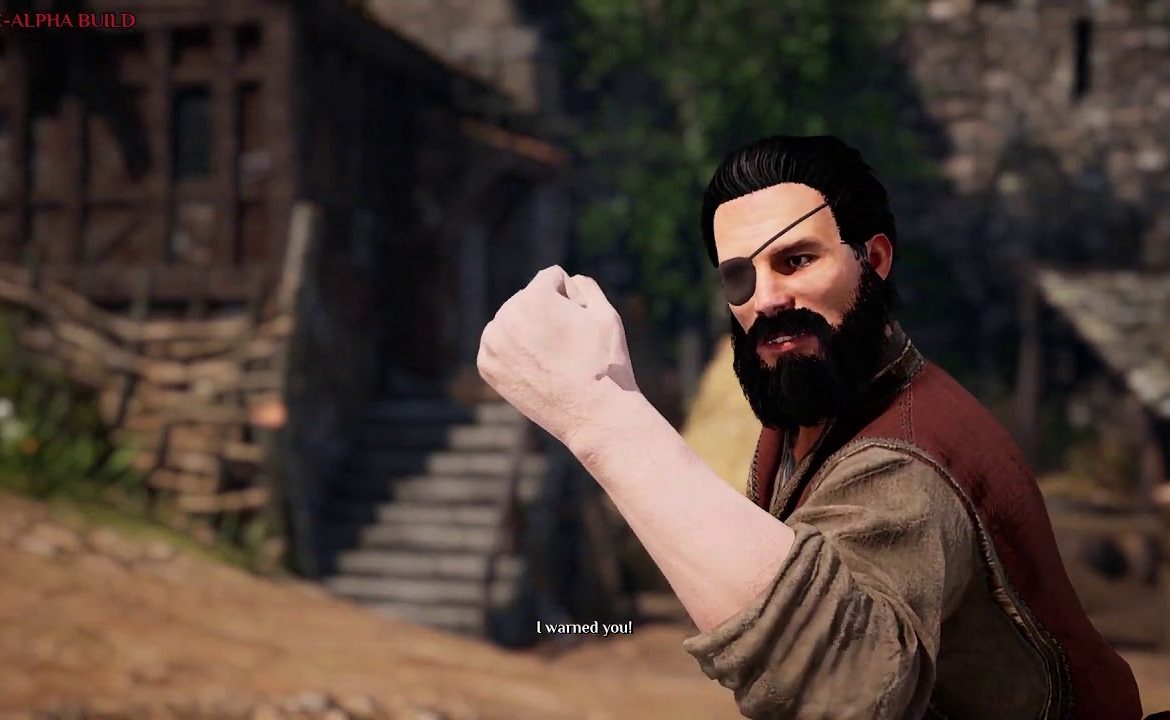
Speaking of which, the story in King’s Bounty II is sadly quite dull. Much of this is caused by the abysmal voice acting and shockingly stilted dialogue. Your chosen protagonist awakes in a prison, finds themselves embroiled in a conspiracy about the king and some magical hocus pocus, is given the “chosen one” status and all the usual tropes you’ll come across in fantasy type stories. Despite parading itself as “epic”, the story is anything but.
Don’t get me wrong, it isn’t the worst video game story told, it’s just exceptionally bland and uninteresting. I cannot stress enough just how truly unbearable some of the voice acting is, with your character regularly coming across completely inappropriately to the situations they find themselves in. It would be manageable if it was funny at least, but after the initial bemusement of hearing it, you’ll quickly tire of it.
I won’t spoil too much, but suffice to say the overall narrative adventure never truly gripped me nor invested me in its stakes. There’s a lot of extra background lore through scrolls, books, dialogue and environmental storytelling you can discover in the open world, but I found myself skipping most of this, as I started to do with much of the spoken dialogue. Other players may certainly get more from this than I did, so the detailed level of background lore will absolutely be appreciated by people more interested and willing to delve into it.
The universe that Nostria and it’s capital cities like Marcella occupy however, is fairly well realised. There are a variety of castles, towns, dungeons, catacombs, cities and astral planes galore within this medieval fantasy realm and there’s some genuinely great artistic design to the landmarks. The Mages’ city is gleams with white marble, Marcella stands pompously with towers of nobles and the astral, other-worldly spaces you’ll frequent are colourful and dark all at once. It has the makings of a world that’s curious and exciting to explore, with a large enough landmass to provide a lot of content for the gameplay.
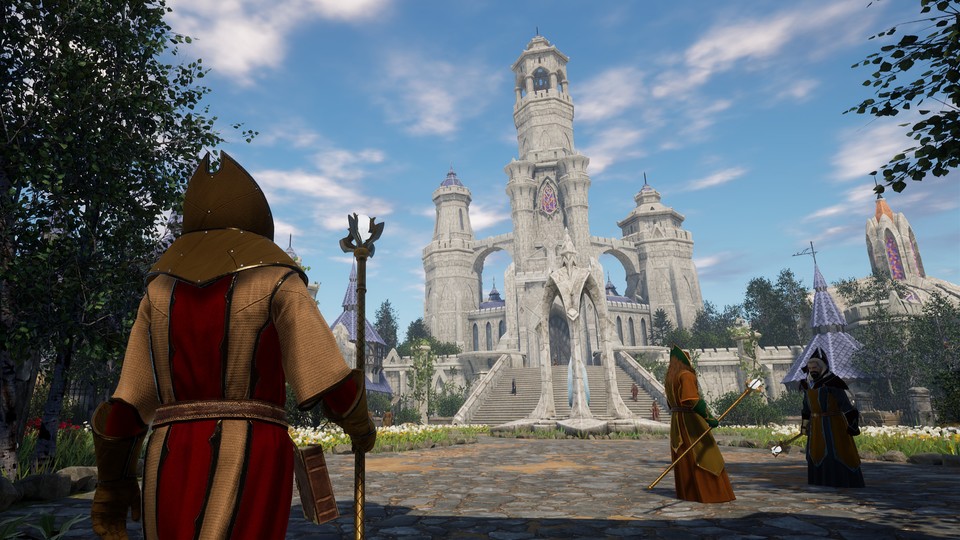
Unfortunately, this too comes with significant caveats and is where the aforementioned lower budget problem rears its ugly, glitchy head. Your horse and idiot character will regularly run into clipping issues on the terrain. Pop-in and draw distances for basically any details or world objects is painfully bad – at one point an area that was supposed to be devastated by dark magic was just… nothing. Until the game remembered, then it kindly dropped in the right colours, textures and ambient music about 8 seconds later. Rocks will float in the air, NPCs will teleport into place and have repeating, awful facial designs, loading screens are frequent, it’s all very under-cooked feeling and the graphics overall are distinctly PS3 era.
Most of which is actually forgivable and I could look past. What I couldn’t stomach however, was the constant, incessant framerate resetting which seemed to happen every 1-2 seconds. Seriously, the game will shudder itself all the time. At first I thought it was some sort of glitch, but no. Each reload of the game or restart brought no respite from it. Eventually I got used to it, but it’s a poor showing to have a performance issue like this pervade the game, regardless of budget. Given this was reviewed via the PS4 version (playing on PS5) it may be different for other platforms but it’s worth being aware of.
Luckily, King’s Bounty II massively redeems itself with its gameplay and turn based combat system. Battles take place on puzzle-like maps using hexagonal grids for movement and attacking. Skirmishes regularly feel like tactical conundrums for you to sink your brain matter into figuring out. You and your opponent will take turns attacking, defending, counter-attacking, plotting control zones, engaging ranged, melee, magic units and overall skirmishing in a tense back-and-forth.
Each Ideal has vendors across Nostria you purchase units from to build up your army, with the undead (skeletons, ghouls, blights), heraldry (knights, swordsman, bowmen), dwarves (crossbowmen, beserkers), mages, trolls, wyrms, beasts and loads more accounted for. Your leadership, warfare and overall level determine how many units you can have per squad and mana or arcane knowledge determine what magic or spells you can dispense upon your enemies.
You can have a maximum of 5 squads in your army at any one time for use in battles, with everything else in your reserves. Figuring out the best tactical setup with your units beforehand is therefore just as essential as your actual tactical acumen in the battle itself. I’ve never been one for bothering with time-consuming mechanics requiring me to focus on composition, but King’s Bounty II demands and rewards you for engaging with it.
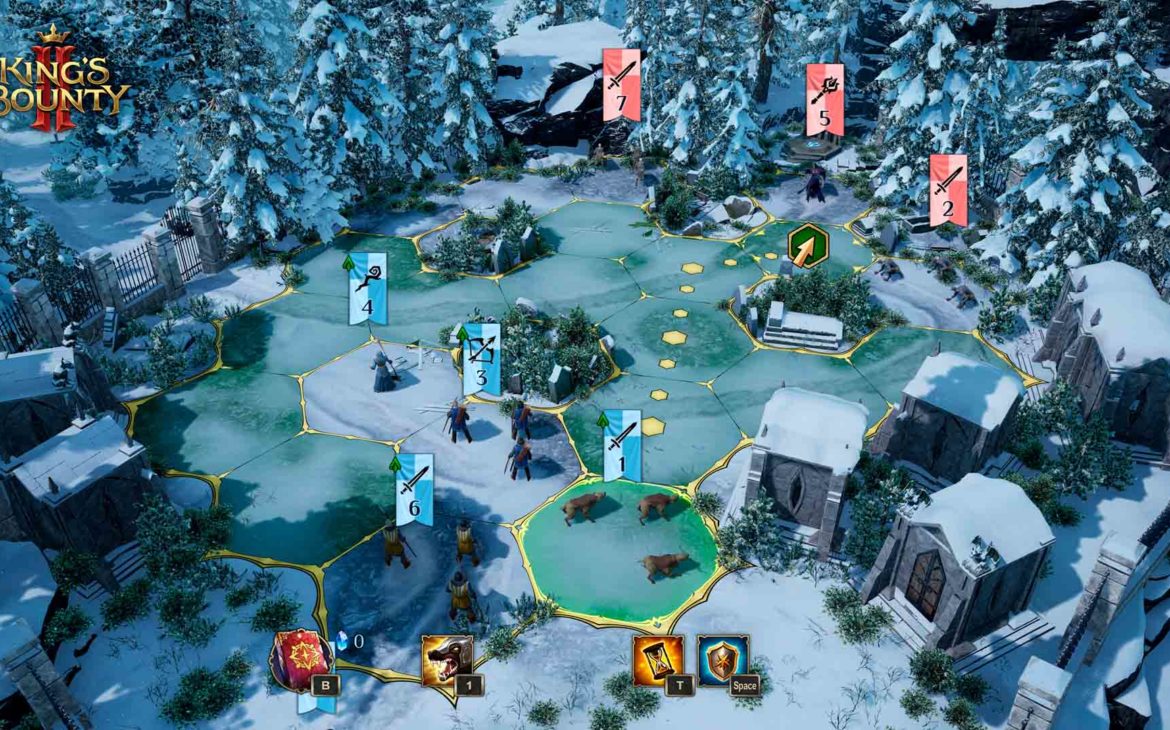
Balancing each unit’s movement point and fighting point is hugely important to victory, as is strategic placement of your battalions. The enemy AI was quite adept at cornering me or forcing me into mistakes in evenly-matched or disadvantaged fights in their favour, which encourages you to think more creatively to overcome a particularly fearsome army. Different units have various abilities you must make use of to buff, debuff, synchronize, disable and overwhelm other squads. It’s a constant feeling of mental gymnastics as you try to keep up with the enemies actions as well as your own. Like a fine game of chess, it’s all about thinking multiple moves ahead, rather than just in the present.
Outside of combat, you’ll be freely exploring the surprisingly grand map of Nostria. You’ll ride around speaking to NPCs, visiting shops and vendors, collecting gold and sellable junk from various interactables like barrels and exploring for quests or secrets. Scattered across the map are shrines and points of power, which when interacted with, will give you permanent stat increases too. It’s very inviting for those that want to get lost within this setting and rewards you for stopping or taking alternative paths before ploughing onto the next quest objective.
If you’ve played The Witcher 3 (which you probably should have by now), it’ll feel very familiar, to the point it probably borders on copyright infringement. Items you interact with are identical, NPC dialogue pops up above their heads, the use of similar camera distance to the player, the starting in a smaller map before transitioning to the open world proper. Aivar’s voice actor is also the cheap own brand equivalent of Geralt’s, desperately trying to recreate the same raspy tones we all loved, but it just comes across as, well, not very good. I also mentally named the horse Roach as it just seemed to fit a little bit too well. Some of the opening musical motifs even had me wondering if I’d accidentally put The Witcher 3’s soundtrack on in the background.
As you level up and progress you gain access to stronger, more powerful and devastating units as well as spells. Each turn you can cast one of a plethora of dastardly hexes or revitalising boons. Again separated into 4 distinct categories, you’ll be given options to drop meteors on unsuspecting fools, summon other allies to your cause or debuff your opponents to prime them for huge damage. There’s a massive range of possibilities when combined with each unit’s unique skills and options. Overall it gives the combat system a significant amount of depth with a high skill ceiling for those willing to master it.
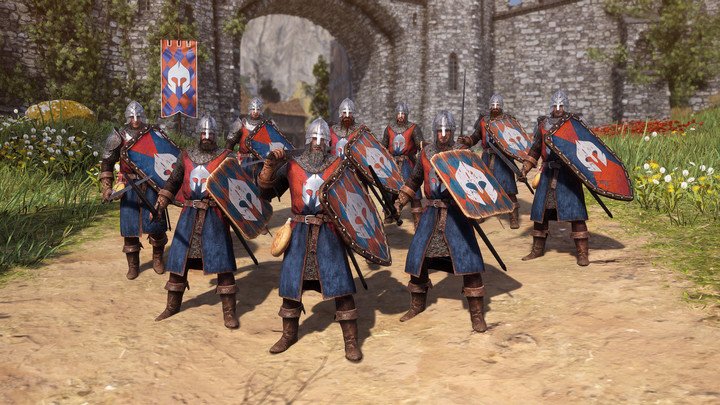
Difficulty wise though, King’s Bounty II is wildly inconsistent and can be a real source of frustration. Early battles are a relative breeze, before suddenly, once unlocking the huge (HUGE) number of side quests, you’ll be inextricably faced with battles where your chances of success are effectively none. Only battles with significant leaders give you an indication of level, so battles without leaders are effectively a crap-shoot as to whether your forces are in any way matched to the challenge.
Sometimes, the challenge was perfectly matched and it oozed with the sense of triumph when I overcame a foe through sheer force and ingenious use of options. Other times though, battles would start with the enemy effectively having 2-3 turns to smash my resistance to pieces before I’d even gotten a sniff, or would begin my troops on vastly inferior, lower, less-covered terrain to be obliterated. Even some story related battles necessary to progress would suddenly jump to 2-5 levels above my character and forces, effectively gatekeeping my progression through the narrative despite the previous objectives in that quest being perfectly achievable without issue.
The lack of balance and the clearly forced nature of how some of this has been structured means that you’re required to go and complete the more mundane, uninteresting side content to acquire money for units and level up your stats to allow for more powerful squads. This isn’t a bad idea in theory, if the side content was worth engaging with, but much of it feels like open world fluff or generic content that does little to convince of the world’s immersion. It isn’t helped by the fact most are fetch quests in design or have “puzzles” which are more rudimentary than a child’s learning blocks.
Replayability potential also suffers from this, as I’m reluctant to go through a whole extra playthrough if it necessitates me having to do virtually all of the side content as well as the main campaign. Lots of people appreciate large amounts of content in their open worlds, in which case you’ll be positively spoiled here. Personally, I’d prefer more quality over quantity with a more balanced, streamlined difficulty curve, which King’s Bounty II surely struggles with.
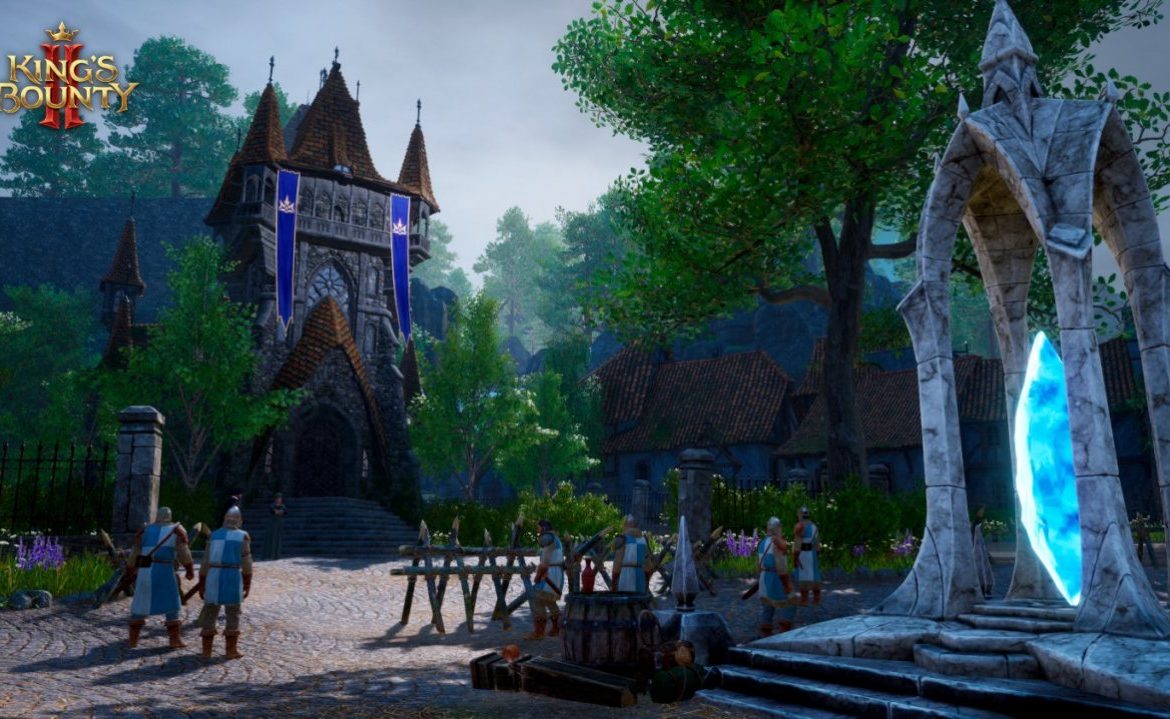
The punishment for defeat is significant too. Whatever units you sacrificed in your failed attempt are gone forever – respawning you at a merchant with nothing but the sense of failure and shame. The enemy you fought remains the same from before the battle, so you can’t whittle down their forces through attrition. The problem is that stronger armies are expensive. You acquire gold relatively quickly in Nostria, but building a whole new army after a defeat is… financially devastating.
You’re pretty much incentivised to simply reload your autosave from the moment before the battle started instead of suffering losses, as otherwise you’ll simply end up soft-locked with no capable means of overcoming a battle. Given the game does autosave as you enter skirmishes, it’s kind of apparent the developers knew this was an issue and just gave you the get-out-of-fail free card with saves instead of actually, ya know, balancing the punishment of defeat with the reward of success.
Even with all of my gripes, complaints and issues though (of which I had many), I found myself having a lot of fun with King’s Bounty II. I’d stayed up later than I should for that “one more quest” itch and surprisingly found myself travelling all over Nostria to build out different army compositions even though it was a chore to get to different vendors. There’s a real ambition here that’s hard to completely disregard and the universe itself has been lovingly crafted. The bones and core of the game’s mechanics are all present, they’re all just unfortunately under-developed and lacking the polish it needs for the game to shine like it should.
With a bit more time and budget, King’s Bounty II could have been one of the pinnacles of the fantasy medieval genre. The turn-based combat is deep, rewarding and challenging (though sometimes unfairly balanced), while the world of Nostria is artistically interesting and well-realised. If only the developers had been afforded the time and money to actually get the title running properly to overcome all the technical problems. The story is lacklustre with shamefully bad dialogue and voice acting, with everything other than the core combat system feeling under-developed and lacking the quality of life elements that have become the norm. King’s Bounty II ends up a decent prize, but a rather hollow haul of treasure that had so much more potential – a bounty more fit for a nobleman than a king.

KIng’s Bounty II is available now on PS4 (reviewed), Switch, Xbox One and PC.
Developer: 1C Publishing EU
Publisher: Deep Silver
Disclaimer: In order to complete this preview, we were provided with a promotional copy of the game. For our full review policy, please go here.
If you enjoyed this article or any more of our content, please consider our Patreon.
Make sure to follow Finger Guns on our social channels – Twitter, Facebook, Twitch, Spotify or Apple Podcasts – to keep up to date on our news, reviews and features.
